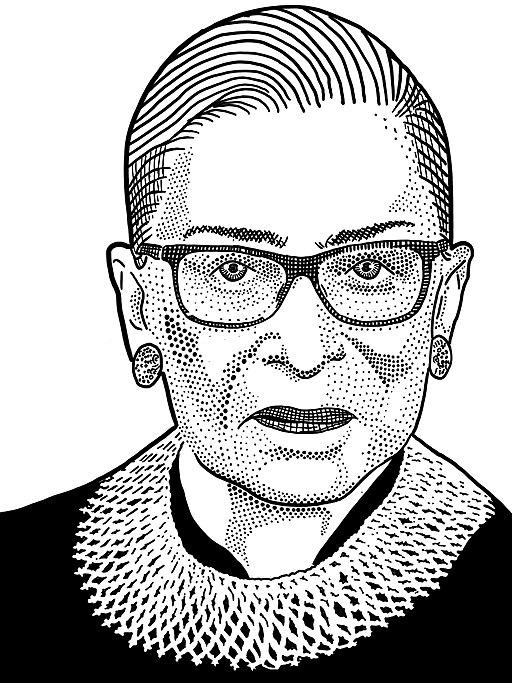March 8 is International Women’s Day, a day dedicated to “celebrating the social, economic, cultural, and political achievements of women.” International Women’s Day is also a call for action to accelerate women’s equality and equity in the world today.
When I was asked to give the keynote for Girl Up Qatar and Hamad bin Khalifa University’s celebration of International Women’s Day in 2017, many women were still trying to make sense of the 2016 US presidential election. I wanted to provide some reason for hope and optimism. Six years later, women’s equity and equality in this world still have a long way to go: Just today, the New York Times ran articles such as, “More Black Women Run for Office, but Prospects Fade the Higher They Go” and “Loss Piles on Loss for Afghan Women.” But we still have reason to be optimistic. With our efforts, we can continue to make progress toward a just, inclusive, and equitable human society. Here’s to continuing to try!
Jocelyn Sage Mitchell. 2017. Keynote speaker, International Women’s Day. Hamad bin Khalifa University and Girl Up Qatar. Education City, Doha, Qatar, March 8.
Thank you to the organizers and the participants for including me in this fabulous International Women’s Day celebration! When I was asked to make a few remarks about women’s contributions to the world, of course my first thought was that there wouldn’t be a human race without us! But besides that obvious biological fact, yes, women have contributed much, and we will continue to contribute more and more. I am optimistic.
Some of you, in the aftermath of this last US presidential election, may not feel as optimistic. I understand that feeling. But let’s marvel, as Rabbi Mark Winer (2008, p. 434) encourages us to, about the incredible progress that we as human beings have seen in just the past fifty or sixty years. Sixty years ago, for example, Whites and Blacks were separated in all areas of life in the American South, from schools, to public spaces and transportation, to the workplace, to voting rights, even in the home: it was illegal for two people to marry each other in some of these states if one was white and the other was black. Now we just finished eight years with our first Black president, who was born to a White mother and a Black father. Sixty years ago, Germany was occupying France and bombing the UK. Now you can drive a car from Paris to Berlin; at the border there’s not even a passport check, just a sign welcoming you to Germany. Things change, and they change for the better.
Let me give you a couple of examples from the lives of two inspiring American women: Ruth Bader Ginsburg, one of the nine Supreme Court Justices of the United States and the first tenured female professor at Columbia Law School; and also Gloria Steinem, the founder of the feminist Ms. Magazine, and for decades the public face of the American women’s movement, receiving the Presidential Medal of Freedom in 2013 for her advocacy. Both of these women are now in their 80s. The America that they grew up in is so different from today. Women couldn’t rent apartments on their own or get credit cards without men. But more importantly, women’s contributions were often seen as limited to what they could do for their children or for their husbands, but not for themselves and not for the world.
Gloria Steinem went to Smith College, an all-women’s school, and yet the focus even at Smith was on marriage, not careers. The Smith president in the 1950s said, “We are educating women because [educated mothers will raise] educated children.” (New York Times, “Ruth Bader Ginsburg and Gloria Steinem on the Unending Fight for Women’s Rights,” 11/15/15)
When Ruth Bader Ginsburg got into Harvard Law School, she was one of 9 women in a class of 500. And the dean of Harvard Law asked her personally, “How do you justify taking a spot from a qualified man?” She had to explain it by saying that her husband was also going into law, and “it’s important for a woman to understand her husband’s work.”
Things have changed so much in their lifetimes! Now that Ruth Bader Ginsburg is a Supreme Court Justice, schoolchildren ask her all the time: “Did you always want to be a judge?” She writes in her recent book (2016, p. xiv) that this question “is a sign of huge progress made.” It doesn’t seem odd anymore that a girl might want to be a Judge one day. This is not how it used to be. When Ruth Bader Ginsburg was in law school, there were 3 women to every 97 men in the legal profession, and there was only one woman who had ever served as a federal judge. Now women make up 30 percent of federal judges and deans of US law schools and general counsels for Fortune 500 companies, and even 3 of the 9 Supreme Court Justices. Half of law students in the US today are women. Things are changing.
We must be optimistic. We have reason to be optimistic. So much has changed and improved in women’s ability to contribute to the world in just one or two generations. It’s incredible. It takes time but it is happening. As Martin Luther King Jr said, “the arc of the moral universe is long, but it bends toward justice.”
But we are still on that arc of history, and we are still striving toward justice and equality. We still have more work to do to get to a place where women have the same opportunities as men to contribute to the world.
The way I see it, there are two major obstacles that prevent women from contributing 100% of their abilities to the world today. There are social obstacles and there are structural, or policy, obstacles. First, by social obstacles, I mean the problem of implicit bias, which affects all of us, men and women. We need to recognize it in ourselves and actively challenge ourselves and each other to see one another as equal human beings. Sheryl Sandberg (2014, p. 39-40) talks about this implicit bias in her book when she describes an experiment that tested the perceptions people have of men and women in the workplace. These two professors took a real-life story about a successful female entrepreneur named Heidi. Sandberg writes:
They “assigned half the students to read Heidi’s story and gave the other half the same story with just one difference—they changed the name “Heidi” to “Howard.” [The professors] then polled the students about their impressions of Heidi or Howard. The students rated Heidi and Howard as equally competent [but]…Howard came across as [nicer]. Heidi, on the other hand, was seen as selfish and not “the type of person you would want to hire or work for.” The same [story] with a single difference—gender—created vastly different impressions. This experiment supports what research has already clearly shown: success and likeability are positively correlated for men and negatively correlated for women. [In other words:] When a man is successful, he is liked by both men and women. When a woman is successful, people of both genders like her less.” (2014, p. 39-40)
And these ideas about the proper roles of women versus men create implicit bias, not only in the US but worldwide, including here in Qatar. In our research on Qatar, we’ve done surveys that ask Qatari citizens about their perceptions of the place of women in Qatari society. What we see from this research is that both men and women have similar perceptions and biases about what Qatari women can and should do. In our 2015 survey, for example, we asked whether “Men make better political leaders than women do”: 3 out of every 4 Qataris agreed with this statement, both men and women. We asked whether “Men have more right to a job than women do”: 6 out of 10 Qataris agree that men do. And we asked whether “There is social pressure for women to focus on family instead of work”: again, 3 out of every 4 Qataris agreed. We can improve how much women contribute to society, but only if we acknowledge and discuss and change how society views the proper place of women. This is something that takes a lot of strength and time and patience, but it can be done, because we’ve already seen it happening.
Second, we also face structural, or policy, obstacles to full women’s empowerment. Anne-Marie Slaughter, in her recent book, describes the problem in the US as the lack of an “infrastructure of care.” Infrastructure is a word commonly associated with things like roads, bridges, airports, electricity, even high-speed internet: all the tools, in other words, to help businesses succeed. Slaughter writes (2016, p. 232), “We need an equal infrastructure of care: a set of arrangements and institutions that allows citizens to flourish not only in pursuit of their individual goals but also in their relationships to one another.” What does she mean by this? She means concrete policies by our government and our economy that help society care for each other, things like childcare and elderly care, paid family and medical leaves, investments in early childhood education, and financial and social support for single parents. When an infrastructure of care exists to help working parents balance their jobs with the needs of their families, then everyone can be more successful and contribute more to the world.
And again, we found the need for the same policies in our research on Qatari women. There are policy steps that Qatar can also take to provide a better infrastructure of care for its citizens, so that Qatari women feel more comfortable contributing to national development. We could increase the maternity leave, create flexible working hours, and give women the option of working from home or part-time. Having childcare facilities in both the workplace and in universities would help encourage breastfeeding, as well as help the working mother and her child feel closer during the day. And for university students, increased flexibility in educational sponsorships regarding the number of courses required per semester for example, would help women feel more supported and better able to balance their studies and their family obligations.
These two types of obstacles—social and structural—are interlinked. If we make progress in one, it will help us in the other. And we can make this progress if we try.
Sandra Day O’Connor, the first female Supreme Court justice, said in 1990: “As women achieve power, the barriers will fall. As society sees what women can do, as women see what women can do, there will be more women out there doing things, and we’ll all be better off for it.”
We have every reason to believe that in another fifty, sixty years from now, we will look back and say “wow” at how far we’ve continued to travel on that moral arc toward justice. I’m excited about what each person in this room will contribute in the days, months, and years ahead. Thank you for inviting me to speak and I’m honored to share this International Women’s Day with you.

Illustration of Ruth Bader Ginsburg, by user Coreypkolb, Wikimedia Commons
